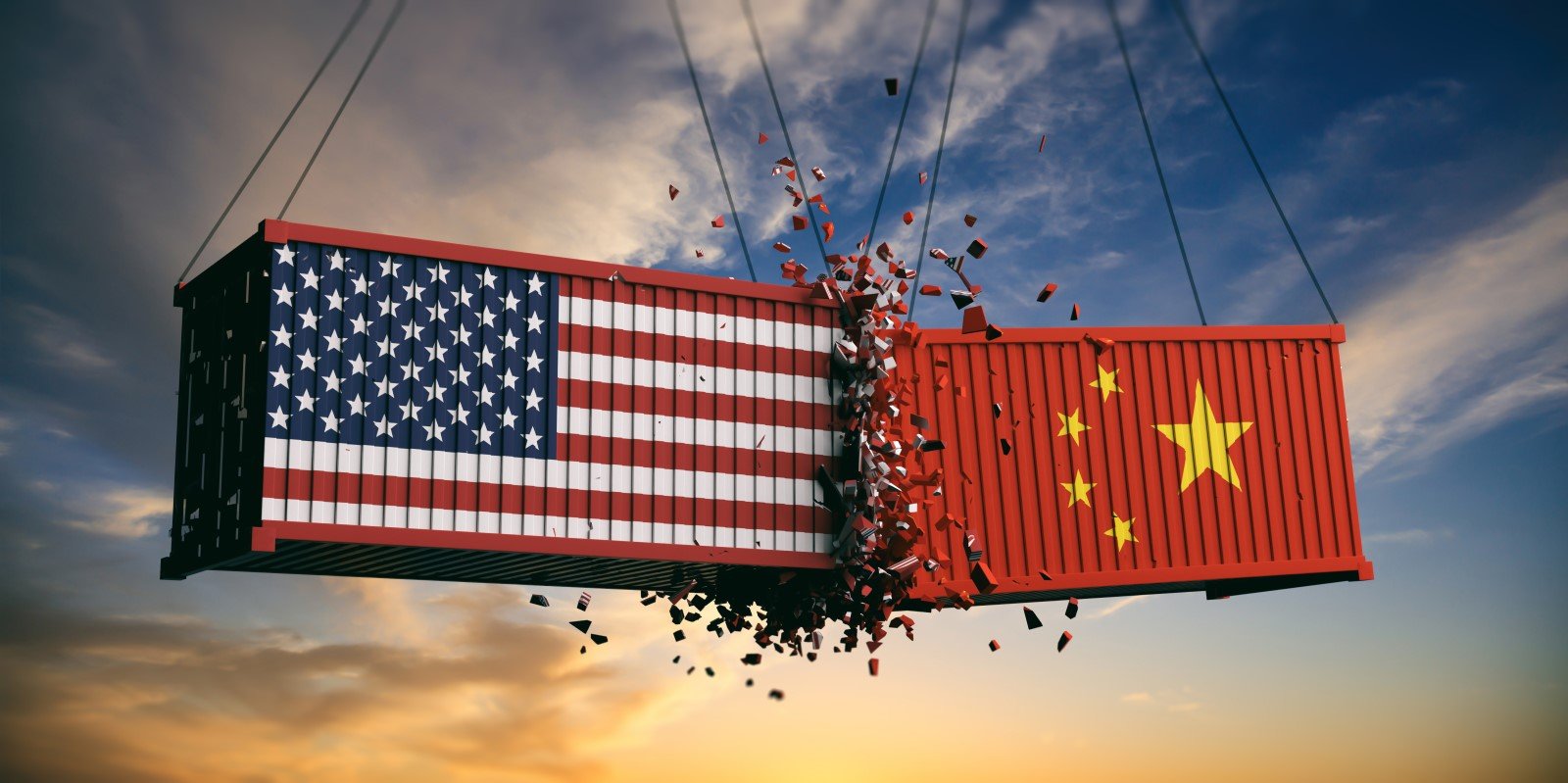U.S.-China Tensions: A New Cold War On The Horizon?

Table of Contents
Economic Competition and Decoupling
The economic rivalry between the U.S. and China is a major driver of current tensions. The trade war initiated in 2018, marked by the imposition of tariffs on hundreds of billions of dollars worth of goods, significantly impacted both economies. This Sino-American trade war highlighted fundamental disagreements over trade practices, intellectual property rights, and technological dominance. Beyond tariffs, the concept of "economic decoupling" has emerged, representing a strategic shift away from intertwined global supply chains.
- Impact of tariffs on both economies: While the tariffs aimed to protect American industries and jobs, they also raised prices for consumers and disrupted global supply chains, negatively impacting both U.S. and Chinese economic growth.
- The rise of "decoupling" and its implications for global supply chains: The push for decoupling involves diversifying supply chains, reducing reliance on Chinese manufacturing, and promoting domestic production in key sectors. This has significant implications for global trade and economic stability.
- Competition for technological dominance and its implications for national security: The competition extends to crucial technological sectors like 5G, artificial intelligence, and semiconductors. Control of these technologies is seen as essential for national security and economic competitiveness, fueling a fierce technological rivalry.
- Examples of specific economic sanctions and their effects: Economic sanctions, such as those targeting Chinese companies involved in human rights abuses or those deemed to pose national security risks, further exacerbate tensions and disrupt economic cooperation.
Geopolitical Rivalry and Military Buildup
Geopolitical competition is another critical aspect of U.S.-China tensions. Disputes in the South China Sea, concerning territorial claims and maritime rights, are a constant source of friction. The status of Taiwan, which China claims as its own territory, remains a potential flashpoint. Both countries are engaged in significant military buildup, leading to increased military exercises and a heightened sense of regional insecurity.
- Analysis of China's increasing military capabilities and its regional ambitions: China's military modernization has dramatically increased its regional power projection capabilities. This has raised concerns among its neighbors and the United States about its growing assertiveness in the Indo-Pacific region.
- U.S. military presence in the Indo-Pacific region and its strategic objectives: The U.S. maintains a substantial military presence in the Indo-Pacific, aimed at deterring aggression and maintaining regional stability. This presence, however, is viewed by China as a containment strategy.
- The role of alliances and partnerships in shaping the geopolitical landscape: The U.S. has strengthened alliances with countries in the region, such as Japan, South Korea, Australia, and the Philippines, to counterbalance China's growing influence. These partnerships are a key factor in shaping the geopolitical landscape.
- Escalation risks and potential flashpoints: The Taiwan Strait remains a primary potential flashpoint, with any miscalculation or escalation risking wider conflict.
Ideological Differences and Human Rights
Fundamental differences in political systems and values contribute significantly to U.S.-China tensions. The U.S., a liberal democracy, emphasizes human rights, individual freedoms, and democratic governance. China, an authoritarian state, prioritizes national unity, social stability, and economic development. These contrasting ideological frameworks lead to disagreements on human rights issues and international norms.
- Discussion of human rights concerns in Xinjiang, Tibet, and Hong Kong: Concerns over human rights violations in Xinjiang (Uyghur population), Tibet, and Hong Kong fuel international criticism of China's human rights record and strain relations with the U.S.
- The role of human rights in shaping public opinion and influencing foreign policy: Human rights concerns are central to public discourse and influence foreign policy decisions in the U.S. and other democracies, contributing to a more critical stance towards China.
- Impact of ideological differences on diplomatic relations and international cooperation: Ideological differences hinder cooperation on global issues, as differing values and approaches to governance make it challenging to find common ground.
- Potential for future conflicts based on differing values: The clash of values and political systems is a persistent source of tension and could lead to future conflicts, particularly as both countries compete for global influence.
The Information War and Disinformation
The competition between the U.S. and China extends to the information domain, characterized by cyber warfare, propaganda, and disinformation campaigns. Both countries engage in activities designed to influence public opinion, undermine their opponent's credibility, and advance their strategic interests.
- Examples of cyberattacks and influence operations targeting both countries: Cyberattacks targeting critical infrastructure and influence operations aimed at manipulating public discourse are prevalent, reflecting the intensity of the information war.
- The spread of misinformation and its impact on public perception: The spread of misinformation and disinformation online further exacerbates tensions, contributing to mistrust and hindering constructive dialogue.
- The challenge of countering disinformation and maintaining information security: Countering disinformation and protecting against cyberattacks is a crucial challenge for both countries, requiring sophisticated strategies and international cooperation.
- The role of social media and technology in amplifying tensions: Social media platforms and advanced technologies are utilized to amplify narratives, spread propaganda, and escalate tensions, highlighting the complexity of managing information flows in the digital age.
Conclusion
U.S.-China tensions are driven by a complex interplay of factors: fierce economic competition, including the Sino-American trade war and efforts at economic decoupling; escalating geopolitical rivalry, exemplified by disputes in the South China Sea and concerns over Taiwan; profound ideological differences and contrasting approaches to human rights; and an intense information war characterized by cyberattacks and disinformation campaigns. The question of whether this amounts to a “new Cold War” is complex and nuanced. While a direct military confrontation remains unlikely, the risk of miscalculation and escalation is real, and the sustained period of heightened tension presents significant challenges to global stability. Understanding the complexities of U.S.-China tensions is crucial for navigating the geopolitical landscape. Continue to follow developments in this critical relationship to stay informed about the potential for future conflict and cooperation. Further research into the various aspects of Sino-American relations is essential for informed decision-making.

Featured Posts
-
 Turning Trash Into Treasure An Ai Powered Podcast From Scatological Documents
Apr 22, 2025
Turning Trash Into Treasure An Ai Powered Podcast From Scatological Documents
Apr 22, 2025 -
 Bezos Blue Origin A Comparative Analysis Of Its Failures Vs Other High Profile Setbacks
Apr 22, 2025
Bezos Blue Origin A Comparative Analysis Of Its Failures Vs Other High Profile Setbacks
Apr 22, 2025 -
 The Selection Of A New Pope An In Depth Look At Papal Conclaves
Apr 22, 2025
The Selection Of A New Pope An In Depth Look At Papal Conclaves
Apr 22, 2025 -
 Ftc Investigates Open Ais Chat Gpt What It Means For Ai
Apr 22, 2025
Ftc Investigates Open Ais Chat Gpt What It Means For Ai
Apr 22, 2025 -
 The Future Of Reproductive Rights Exploring The Role Of Otc Birth Control Post Roe
Apr 22, 2025
The Future Of Reproductive Rights Exploring The Role Of Otc Birth Control Post Roe
Apr 22, 2025
